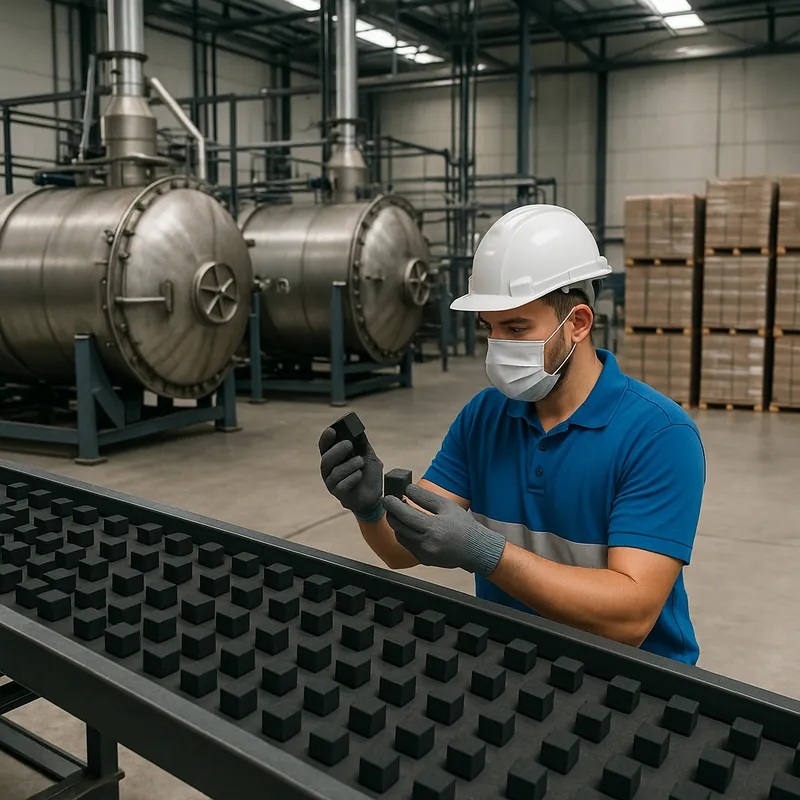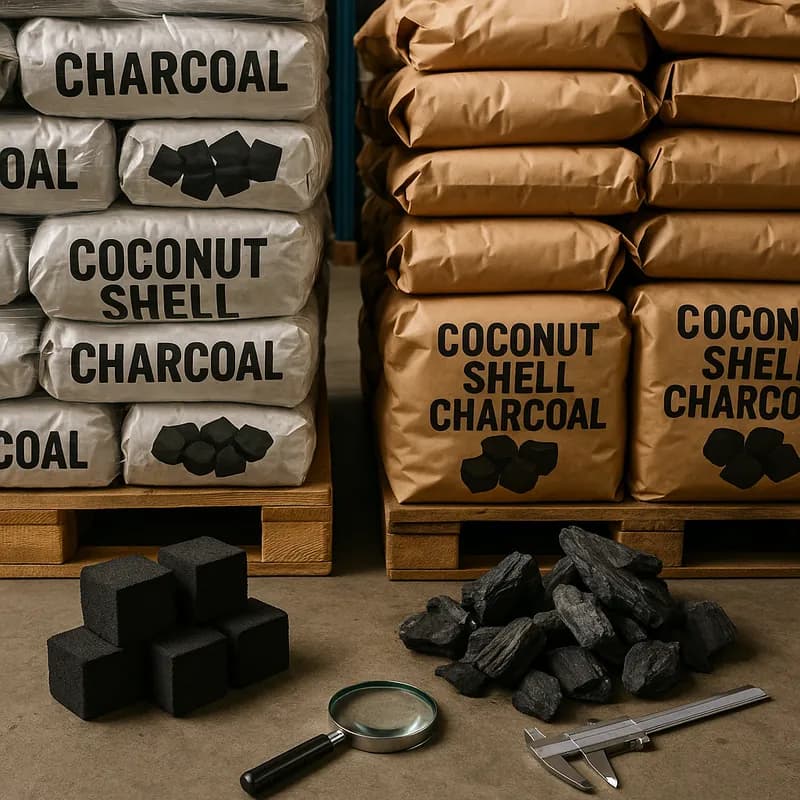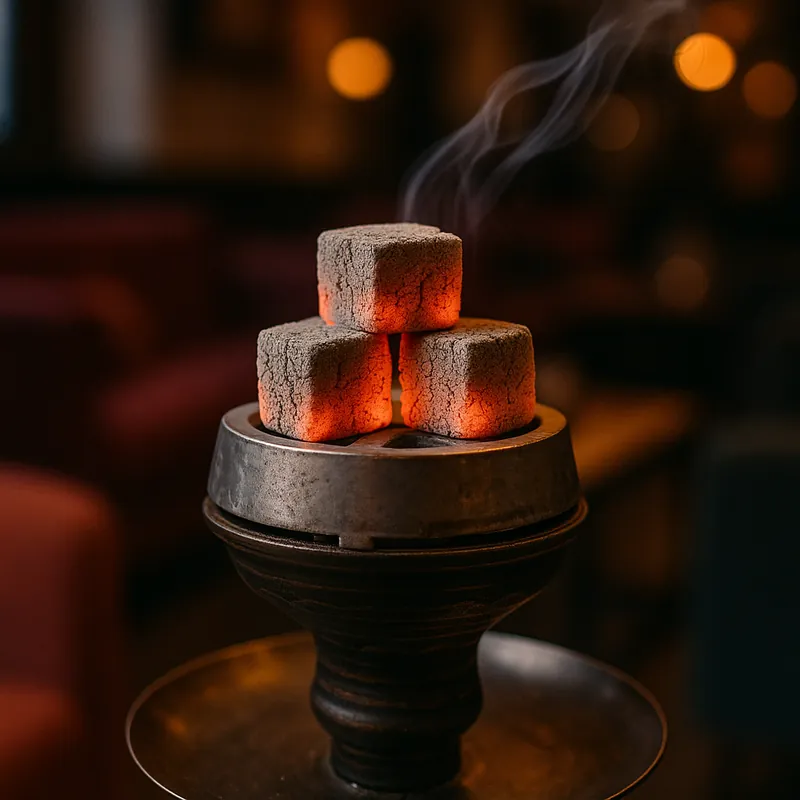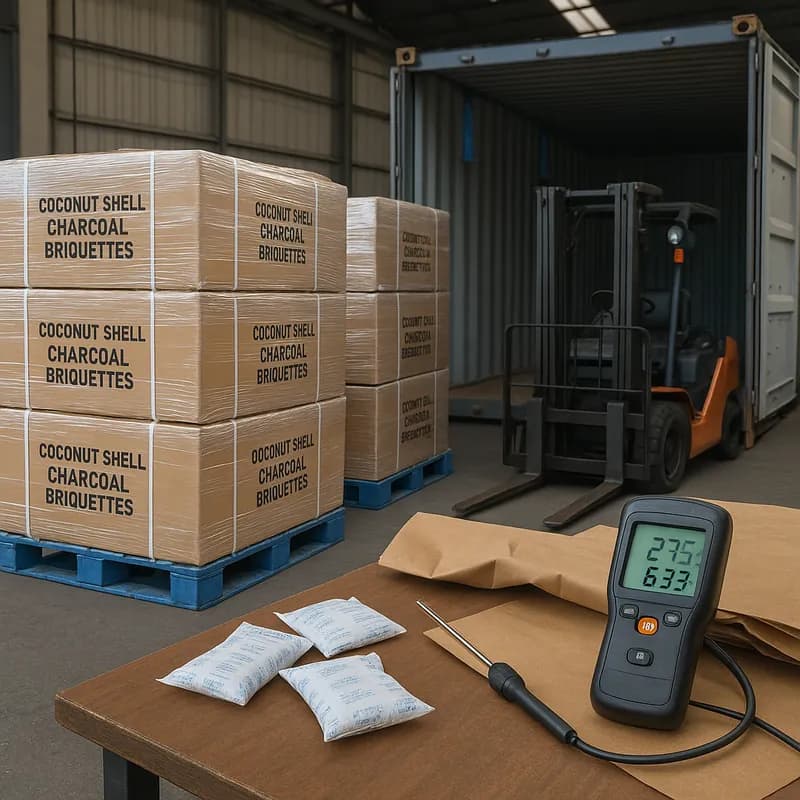Get practical, audit-ready steps for sustainable charcoal sourcing: reduce EUDR/Lacey risk, keep performance high, and win trust. What to check.
Why Sustainable Charcoal Sourcing Is Becoming a Market Demand
We’ve been on the factory floor long enough to see this shift up close: sustainability in charcoal isn’t a niche anymore—it’s a buying requirement. Restaurants, retailers, and importers aren’t just asking “Is your charcoal hot and clean?” They’re asking “Where did it come from, can you prove it’s deforestation-free, and will it keep us compliant?” Here’s the straight talk you can actually use.
The Results You Can Expect
If you take sustainable sourcing seriously, three outcomes are realistic.
First, you’ll reduce regulatory risk. The EU’s deforestation rules are ramping up, the UK’s due diligence requirements are tightening, and the US Lacey Act declarations are enforced more consistently. If your supplier can’t prove legal origin and a clean supply chain, shipments get delayed—or worse, rejected. Teams that switch to verified, traceable charcoal get audit-ready documentation and smoother customs clearance.
Second, performance won’t suffer. With the right feedstock and process, sustainable charcoal often performs better. Coconut shell briquettes, for example, deliver steady heat, long burn times, and low ash. Many restaurants that ran side-by-side tests with hardwood lump found the “cost per service” dropped—even if the per-ton price was slightly higher—because they used fewer pieces, changed grills less often, and cleaned up faster.
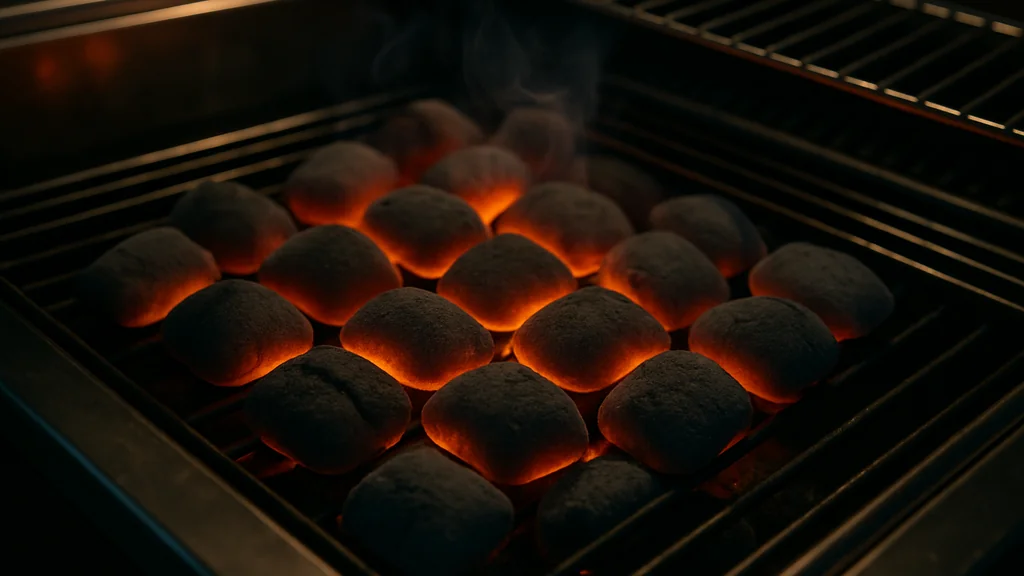
Third, you build reputational equity. Consumers in 2025 are skeptical of “eco” claims. But they reward brands that can back it up. We’ve seen steakhouses highlight deforestation-free fuel on menus and get real customer engagement. Retailers with transparent sourcing win repeat buyers and fewer complaints about smoke and sparks.
Practical takeaway: Treat sustainability as a performance and risk decision, not just a marketing claim. The ROI shows up in compliance, consistency, and brand trust.
How to Get There
Let’s define “sustainable charcoal” in a way that actually guides purchasing decisions.
- Legal and deforestation-free origin: For wood-based charcoal, that means documented harvest rights and supply chains that don’t drive land conversion. For coconut shell charcoal, it means shells as a true by-product of food processing (not mixed with wood to boost heat).
- Efficient, ethical production: Modern retort kilns or controlled carbonization that minimize emissions, safe working conditions, and fair pay. If a supplier won’t talk about their kilns or workforce, that’s a red flag.
- Transparent chain of custody: Batch traceability from raw material to bag, with certificates that match the product you’re buying.
Is FSC certification enough on its own?
FSC is a great filter, but it’s not a silver bullet. In practice, we recommend:
- Verify the certificate live: Ask for the FSC license code (format: FSC-Cxxxxx) and check it on the official FSC database. Make sure “charcoal” or the relevant product type is in scope.
- Match the claim to the product: “FSC 100%” and “FSC Mix” mean different things. Ensure invoices include the FSC claim and your specific product.
- Cross-check batch documentation: Chain-of-custody numbers should trace back to production lots. No batch info = no audit trail.
We’ve seen FSC labels used incorrectly or outside of scope. That’s where buyers get burned.
Is coconut shell charcoal more sustainable than hardwood lump?
Often, yes—when it’s done right. Coconut shells are an agricultural by-product. Using them relieves pressure on forests, and shells have naturally high fixed carbon, which supports long, consistent burns with low ash. But it’s not automatically sustainable. Watch for:
- Wood admixture: Some producers add wood fines to hit heat targets. Ask for a chemical/ash profile and declare “100% coconut shell” in your spec if that’s what you want.
- Binder transparency: Food-grade starch is standard; avoid unknown binders that can smoke or taint flavor.
- Shell sourcing: Reputable producers can list the mills or cooperatives supplying shells.
For restaurants and industrial users who want predictable heat and less mess, our BBQ Coconut Shell Charcoal Briquettes are a practical example: 4–6 hours burn time, high heat output, and low ash. The by-product feedstock keeps the footprint lean while delivering consistent performance night after night.
How can you tell if charcoal is illegally or unsustainably sourced?
A few fast checks we use:
- Vague species or origin: “Natural hardwood” with no species, no region, and no harvest documents is a warning sign.
- Too-cheap prices: If the price is well below market for the grade, something’s off—often feedstock of dubious origin or uncontrolled kilns.
- Documentation gaps: No kiln photos, no worker safety protocols, and no third-party audits usually correlate with poor practices.
- FSC mismatch: Certificate expired, wrong product scope, or no FSC claim on the invoice.
- Performance flags: Excessive smoke and sparks can indicate high volatiles from rushed carbonization.
What regulations affect charcoal sourcing in 2025?
- EU: The EU Deforestation Regulation (EUDR) is coming online, requiring importers of wood-derived products (including wood charcoal) to submit due diligence statements and geolocation of harvest areas. Coconut shells aren’t currently in scope, which is one reason EU buyers are shifting toward coconut-based charcoal for lower compliance friction.
- UK: The UK Timber Regulation (UKTR) maintains due diligence for timber products; wood charcoal is in scope. Expect growing alignment with deforestation-free requirements under the Environment Act.
- US: The Lacey Act requires species and country-of-harvest declarations for plant products, including HS 4402 (charcoal). Misdeclaration can lead to seizures. For coconut shell charcoal, declare Cocos nucifera and country of harvest/production.
Practical takeaway: If you’re importing wood charcoal into the EU/UK/US, build compliance into your buying process now. Coconut shell charcoal can be a lower-risk path for EU buyers.
Does sustainable charcoal burn as hot or long?
Yes—when the process is right. High fixed carbon, low moisture, and controlled carbonization drive heat and longevity. Coconut shell briquettes and well-made FSC-certified hardwood lump both perform excellently. In our tests, quality briquettes deliver more consistent temperatures over time, which kitchens prefer for repeatable results. For shisha and hospitality, specialized formats like our Shisha Charcoal are designed for quick ignition, long session stability, and low smoke.
Practical takeaway: Evaluate cost per service, not cost per ton. Specify burn time, ash %, and heat output in your procurement documents.
What Could Go Wrong (And How to Fix It)
Supply swings: Coconut shells are seasonal and compete with other industries. If your supplier runs lean on inventory, lead times slip. Fix: lock in quarterly volumes, ask about buffer stocks, and diversify origins when volumes grow.
Paperwork that doesn’t stand up: We’ve seen buyers accept PDFs that look official but don’t match the product. Fix: verify FSC codes online, ask for batch-level chain-of-custody, and require updated certificates each quarter.
Humidity damage in transit: Briquettes can pick up moisture during long sea journeys and arrive soft or crumbly. Fix: specify moisture limits (e.g., ≤8%), use inner liners, add desiccants in containers, and avoid monsoon-season stuffings when possible.
Performance mismatch: A steakhouse switches from lump to briquettes and finds slower initial sear. Fix: adjust lighting protocols (briquettes often need a few extra minutes), mix formats for sear vs. hold, or choose a higher-density briquette spec.
EUDR blind spots: Wood-based charcoal without geolocation data will get stuck. Fix: ensure your supplier can provide polygon coordinates for harvest areas and a full due diligence statement. Or switch part of your portfolio to coconut shell briquettes to reduce exposure while the wood side catches up.
Price-only buying: The cheapest bag often hides higher operating costs—more ash, more labor, inconsistent heat. Fix: run a standardized 3-shift test in your kitchen or plant and track fuel usage, prep time, and cleanup minutes.
Practical takeaway: Most problems are predictable. Build a short spec and a verification routine, and you’ll avoid 90% of issues.
Making It Work for You
Here’s a simple, proven way to switch or upgrade without drama.
- Define your spec: Burn time target (e.g., 4–6 hours), ash max (e.g., ≤3%), moisture (≤8%), and format (briquette size or lump grade). Put “deforestation-free” and certification/traceability requirements in writing.
- Choose your feedstock strategy: If you sell into the EU or need stable, repeatable performance, coconut shell briquettes are a strong default. If you want hardwood flavor or visual appeal in open kitchens, use FSC-certified lump for searing and briquettes for holding.
- Run a 2–3 week trial: Test side-by-side in real service. Track fuel usage per cover, smoke levels, cleanup time, and guest feedback. Most teams see results in the first week.
- Implement a due diligence checklist:
- Live-verified FSC (if wood-based) and scope match
- Chain-of-custody on invoices
- Origin documents and, for EU wood, geolocation data
- Social and safety audits (e.g., SMETA/BSCI) or equivalent
- Kiln type and emissions controls
- Moisture/ash/fixed carbon lab reports per batch
- Container packaging plan (liners, desiccants)
- Contingency supply plan for seasonality
- Set quarterly reviews: Certificates, performance metrics, and any regulatory updates. It takes 30 minutes and prevents expensive surprises.
If you have questions about Why Sustainable Charcoal Sourcing is Becoming a Market Demand or need expert guidance, contact our team.
Bottom line: Sustainable charcoal sourcing isn’t a trend—it’s the new baseline. The good news is you don’t have to trade performance for principles. With transparent supply chains, the right feedstock, and a simple verification routine, you’ll get hotter fires, cleaner kitchens, and fewer compliance headaches. That’s what we’re delivering every day from Jakarta to 50+ countries—and why buyers are sticking with it.
